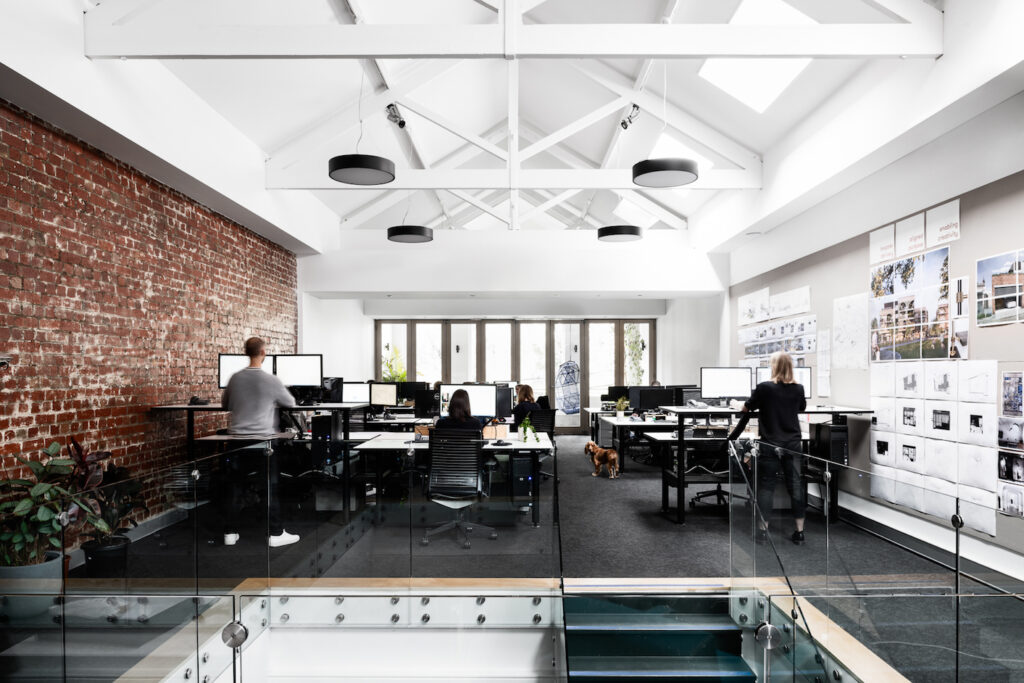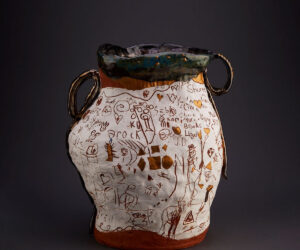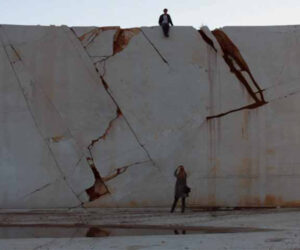Designing Future Workplaces at MPavilion
The function and purpose of workplaces is changing – what was once simply a place to conduct one’s job now faces great demands. These environments are now expected to provide social connectivity; feature sustainable, peoplecentred design; and address millennial churn.
A panel being held at MPavilion on Wednesday 23 January will look at this increasingly complex field. Designing Future Workplaces, a free discussion, is presented by Communications Collective as part of its popular Collectivity Talks series.
Design experts Gabriella Gulacsi and Dana Hutchins from Technē Architecture + Interior Design will join Dave Martin from The Sociable Weaver Group and Ronnen Goren from Studio Ongarato. They will discuss staff integration and the use of space, sustainability, and the relevance of hospitality design to the new work space. Cassie Hansen, editor of Artichoke magazine, will be the panel moderator.
“It’s about creating a space that attracts, excites, develops and retains exceptional people,” says Gulacsi, who is a senior associate at Technē.
“The move to agile work practices, so transformative only a decade ago, is now only a starting point for a broader conversation around overall user experience. This begins with a consultative process that considers social connectivity – we look at how people use their workplaces, how they move around throughout the day.”
“What kinds of spaces would they like to see in order to foster the personal interactions that make work so much more than just work? This is particularly important for those working with millennial staff, who expect to trade loyalty for an enhanced experience.”
Gulacsi notes that user experience considers the personalities of those working in the space – some, for example, are introverted while others are outgoing and gregarious. Providing for each influences successful workplace design.
Goren, co-founder of Studio Ongarato, says there is a crucial relationship between branding, values and workplace design.
“Typically, a business will establish a distinct position for their brand, founded on values pillars that relate to their organisational culture and behaviours,” he says.
“This will then define the appropriate type of workplace design, including the modality embedded in the design strategy for that workplace. That is, does it need to feature activity-based working; is it open plan or does it provide more traditional enclosed offices? Are innovation and collaborative spaces the focus?”
“A distinct interior will give us an indication of the corporate values, identity and character. It also cements the personality of that brand through the people that workplace attracts.”
Martin, responsible for the development and construction wing at Small Giants, agrees that organisational values are vital for defining workplace design.
“It’s incredible see how the Small Giants philosophy transforms into a very palpable energy when it’s held within a space,” he says.
Sustainability is a key philosophical tenet at Small Giants: the workplace is abundant in natural light; designed to create zero waste, it is carbon and water positive and features plants and natural ventilation for air purification.
Martin says the Small Giants team shares “spaces, ideas, meals and collaborations” with the rest of the organisation’s family, which includes Dumbo Feather, the School of Life Australia, Blab and Impact Investment Group.
In turn, Technē has observed that users are treating the hospitality spaces they have designed, such as Brunetti Flinders Lane, as de facto workplaces where they hold business meetings or work solo on laptops. This then informs the practice’s workplace design.
“Strategic ambience” is a central concept that the practice takes from its work in hospitality, according to senior associate Dana Hutchins.
“The success of any built environment relies on creating an experience and establishing a sense of place for the user with an ambience that is both captivating and a strategic fit with the brand,” Hutchins says.
“In designing workplaces, we don’t start with preconceived ideas about materials but consider the unique needs of each workforce and brand. However, it seems that creating a variety of unique spaces and giving them a textural quality – one more commonly associated with cafes and bars –works to provoke the interest people are looking for. You don’t get that with more traditional, generic offices.”
“We are seeing a lot of companies approach Technē to design their workplaces due to our strong hospitality focus.”
‘Designing Future Workplaces’ by Collectivity Talks Wednesday 23 January, 7.30pm at MPavilion.
MPavilion is located in the Queen Victoria Gardens, opposite the Arts Centre on St Kilda Road, Melbourne.



